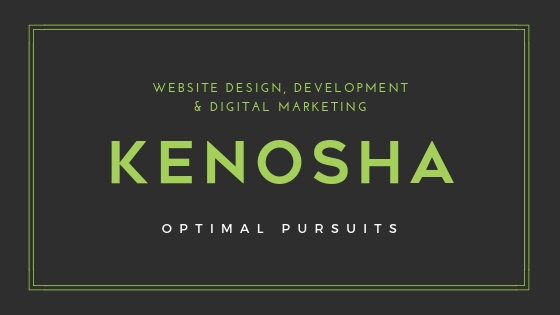What is search engine optimization?

Search engine optimization is an effort to make popular search engines (Google, Bing, Yahoo, etc,.) rank your website page with a particular search query. A search query is simply a combination of keywords such as “food market near me”. This search query has 4 keywords. The goal of search engine optimization is to have your website page show up on the first page of the search results. Why? Individuals searching for a solution will see your website near the top of the results and visit your website.
Why is search engine optimization important?
Search engine optimization is important because it can serve as a lead generation machine for your business. A study by Impact notes that “Google receives over 63,000 searches per second on any given day.” That’s over 1.9 trillion searches a year. What if you can tap into only 1,000 of those searches relating to your business? Let’s say a visitor found your website and were happy with how extensively you described a particular process from A to Z. They now perceive you as an expert and may actually subscribe to your content and in some cases, request a quote. Search engine optimization is not a simple topic, but there are basic steps you can take to improve your website page ranking significantly. Below we discuss 3 common search engine optimization mistakes and solutions.
3 Common Search Engine Optimization Problems & Solutions
The greatest mistake a business can make in the search engine optimization (SEO) is not knowing its significance. You may have been optimizing your web pages for search without knowing. By writing extensive quality content on a particular topic, you are showing search engines (Google, Bing, Yahoo, etc,.) that you are an expert on a topic. This translates into your website page showing up high in the search results. This equates to individuals visiting your website and potentially becoming clients. Avoid the following top 3 search engine optimization mistakes.
Problem 1: Delivering low word count content
Your business offers a service that may solve several problems for your ideal client. You list 5 features of the service and that is all. Your potential client will surely understand the benefits of each feature, correct? If you cannot paint a story of the problem your potential client may be facing, how your service solves the problem, and examples of how to use your service, you are leaving the visitor to imagine it for themselves. You are also communicating to your visitor that you are passive.
Solution 1: Write extensive content on your subject
Position yourself as an authority on a topic by writing content that helps answer your visitor concerns. Let’s imagine you own a carpentry business. Your website has a page that exclusively discusses one of your services, its benefits, and concerns that your potential client may have. You offer cabinet installations and extensively discuss why a custom cabinet installation is far superior to a stock cabinet installation in the Chicago area. You must have wrote content on this subject to educate your potential and existing clients. So, when potential client is searching Google for “chicago custom cabinet installation”, your business website page shows up. By having invested in creating useful content, you have generated a lead that may turn into a client. Search engine optimization increases lead generation when done strategically.
Problem 2: Skipping Page Title and Meta Tags
Each website page has properties that are not clearly obvious. There are two main properties that you should know about–title and description.
Most website pages do not have a search engine optimized title and description. It is your chance to describe to potential visitors what your website page is all about before they commit to visiting your website. It’s your chance to intrigue a potential visitor. Do not miss this opportunity.
Solution 2: Configuring Page Title and Description
When it comes to the website page title, if you are on a desktop/laptop machine, hover over the browser tab. Does text appear? That is the page’s title. That’s the exact wording that appears in Google search results. Many businesses neglect to properly write the title of each page. This is your chance to summarize what your page discusses. Otherwise, Google will set the title for you, and it may not be as effective.
As far as the website page description, let’s go back to Google search results again. The title typically appears in blue and is has the largest font size. The search result item description has a smaller font size and typically has a gray color. Google allows you to write more content here. It is supposed to describe your page further. The description must also include a call-t0-action. For example, your contact page might have a call-to-action saying “reach out to us to learn about our rates”.
Problem 3: Creating content that’s not about your keywords
We have discussed the topic of ranking website pages in Google intensely, but how does Google decide which website’s win the best spots in ranking. Google uses an algorithm based on several factors. One of those factors looks at each website page separately and tries to understand what topic you are discussing. Let’s imagine your website page headline is “Reviewing Financial Statements Monthly Is Beneficial to your Business’s Accounting Success”. Instead of discussing benefits of monthly financial reviews, you discuss how your business sponsors a company-wide skiing trip. Google will basically laugh at you and give you a lower score.
Solution 3: Create content that focuses on specific keywords
When you decide to be serious with your search engine optimization efforts, you will have to become disciplined in how you write an article on a particular topic. In the same way a college essay has an outline, you must have boundaries in what you can discuss. One way to keep yourself on track is to pick a set of keywords you will mention throughout the article.
Based on a previous example about accounting, you may have the following phrases in your article:
- “Business accounting success includes the following 3 steps”
- “Fortune 500 companies make it a habit to check monthly financials“
Do you recall the headline of the article? It was “Reviewing Financial Statements Monthly Is Beneficial to your Business’s Accounting Success”.
Notice how the highlighted keywords match keywords that are in the headline. The goal is to write your article and insert those keywords where it makes sense. You cannot simply include all the keywords in every sentence you write because it will not make sense. Also, Google will mark your website page as spam.
Next steps
A proper search engine optimization strategy can rank your website page at the top of Google search results. Each visit can generate a potential lead. Optimal Pursuits offers a complimentary search engine optimization audit. Request an audit below and we will send you suggestions on how to improve lead generation with simple search engine optimization tactics.








